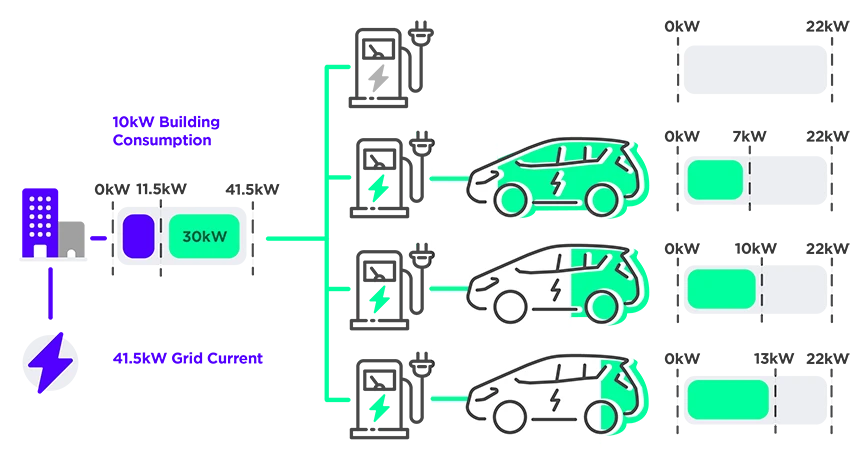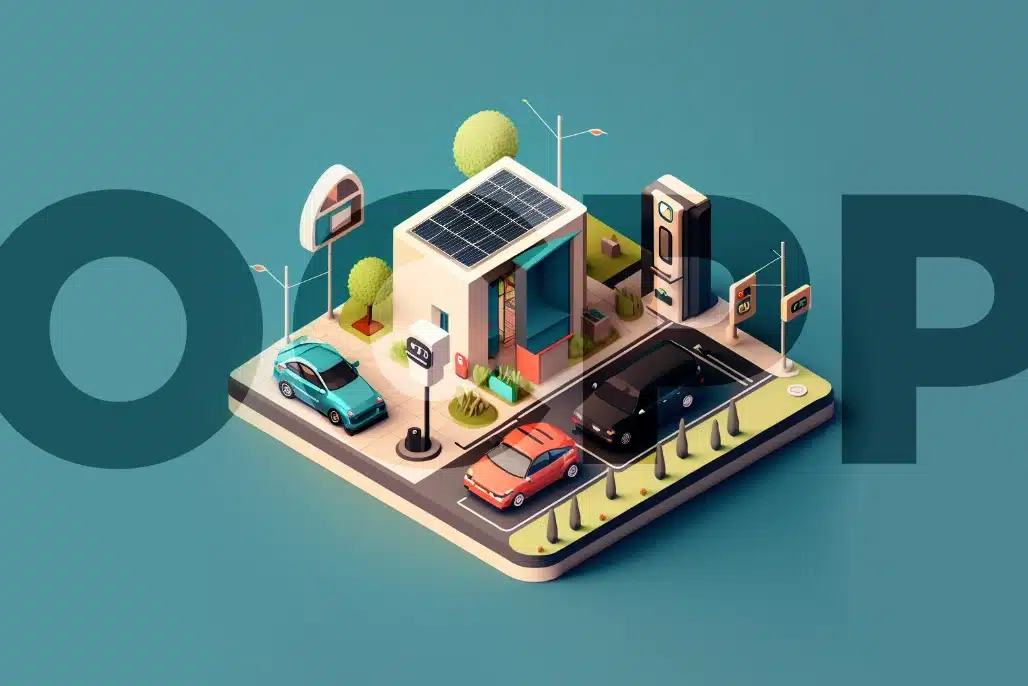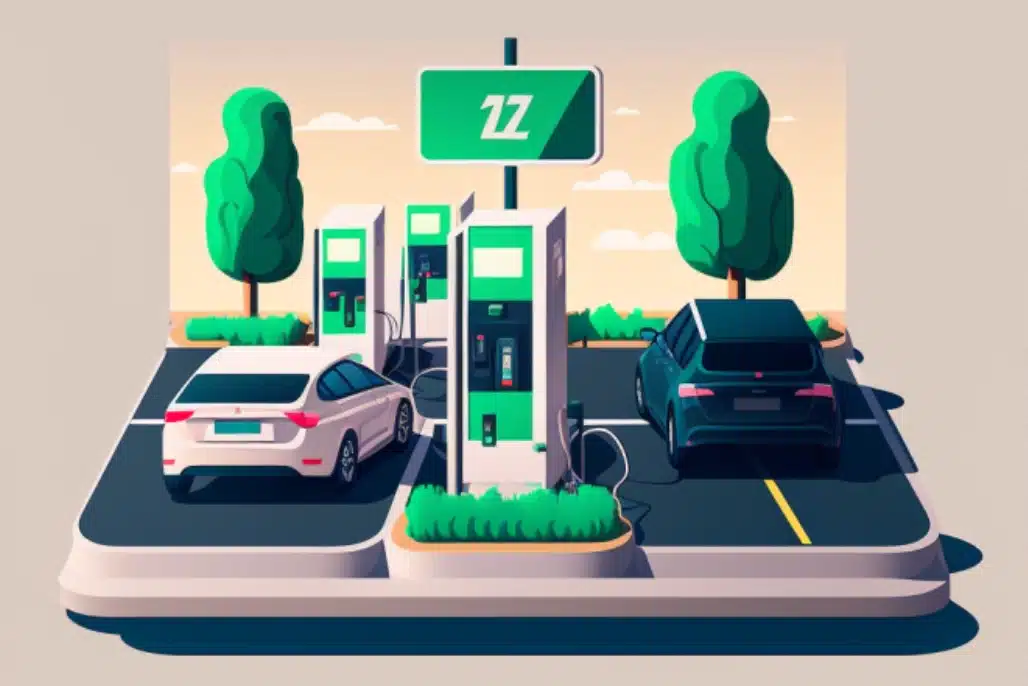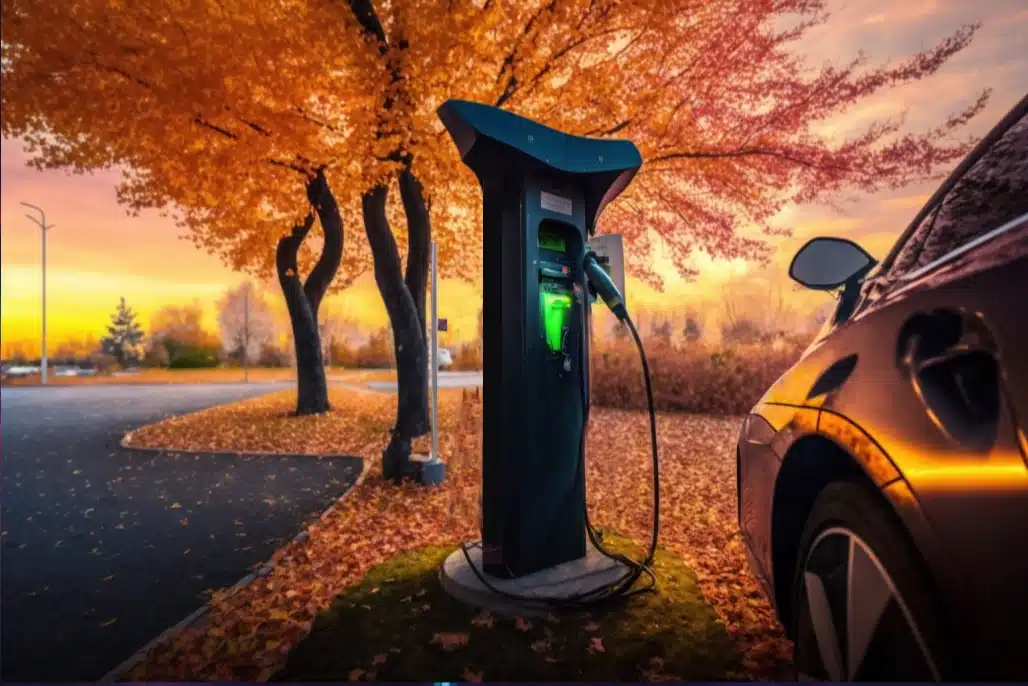Smart Charging is revolutionising how electric vehicles (EVs) are being charged, allowing charge point operators (CPO) and fleet operators to manage charging sustainably and reduce costs at peak demand hours.

Smart Charging strategies enable CPOs to make scheduling decisions such as preconditioning, balancing, and load-shifting in order to reduce operational costs and smooth out fluctuations on the electric grid.
This improves sustainability initiatives without compromising on the performance of EVs when used for fleet purposes. Smart Charging also requires minimal infrastructure investment from CPOs, enabling them to optimise their charging resources and ultimately save money over time due to its efficient handling of peak demand situations.
SMART CHARGING
WHAT IS DUMB CHARGING?
Firstly I feel compelled to define the dumb EV charging. Dumb EV charging is a traditional method whereby drivers plug their electric vehicle into a charge point using either a Type 1 or Type 2 connector and the charging system automatically provides maximum power until the battery reaches full state of charge.
There are some distinct disadvantages the this when compared to smarter methods such as speed or energy-controlled charging, dumb EV charging does not optimize energy management which can significantly reduce the amount of electricity used and therefore lower energy bills.
Additionally, because Dumb EV Charging only offers maximum power continuously until full SoC, instead of reducing power when necessary, it is less feasible for users who are interested in reducing wear and tear on their car's batteries over time.
WHAT IS SMART CHARGING?
WHAT IS SMART CHARGING?
Smart EV charging facilitates an efficient charge process, as it allows Charge Point Operators (CPO) and Charge Point Management Software (CPMS) to optimise how much energy is delivered to each vehicle without taking up the maximum capacity of the charge point.
This is possible due to a data connection between the EV, Charge Point Operator and Utility, automatically transmitting data when an EV is plugged in. A central system then uses this data to intelligently manage the charging process based on a range of factors, such as pressure on the grid, onsite demand, peak usage tarrifs. Smart EV charging provides an important efficiency gain in managing electric vehicle demands on our power grids.
SMART CHARGING BENEFITS FOR EV USERS
- kWh price caps
- Scheduled charging
- Battery capacity limits
- Renewable integration
- App control, & device lock/unlock
- Charging analytics
- Load management
BENEFITS
ELECTRIC VEHICLES FLEETS
Greater Efficiency
By combining smart charging with EV fleet management software, you can create a custom-tailored charging schedule to ensure optimal performance of your vehicles. This approach will not only reduce downtime but also enhance the overall utilization rate of the entire fleet.
Cost Savings
By integrating smart charging systems into an EV fleet, managers can strategically schedule charge times when electricity costs are lower, thus reducing the overall cost of operation.
Enhanced Fleet Management
By utilizing smart charging solutions, fleet managers can gain valuable insights into their fleet's charging activity. This data greatly enhances the efficiency of operations and reveals potential cost-saving measures to maximize savings in the long term.
Greater Control
Fleet managers can take control of the charging process with smart charging, which allows them to observe and regulate vehicle electricity from a distance.
Sustainability
By utilizing Smart charging, EV Fleet owners can now make strides towards sustainability goals by taking advantage of renewable energy sources.
ELECTRIC VEHICLES FLEETS
Cost savings and revenues
CPOs and EMSPs can reduce their operational costs and boost income by accessing smart charging solutions. By optimizing pricing models, they can introduce new EV charging business plans that will be attractive to customers. Data-driven analyses ensure informed decisions for intelligent decision making when it comes to their businesses; which promotes growth with accuracy.
Greater control
Smart charging systems empower CPOs and EMSPs with a higher level of authority. Furthermore, they are able to monitor, manage, and fix any issues at the smart charging stations remotely in real-time.
Improved charging infrastructure
Smart charging solutions allow for the most effective deployment of electric vehicle charging infrastructure. By pinpointing areas where charge is needed, they make certain that resources are used to their full potential.
Improved grid stability
Intelligent charging networks that organize the electricity distribution for numerous EVs and oversee power demand can drastically enhance grid stability, particularly for extensive CPOs with a large quantity of smart EV chargers.
TECHNIQUES
STATIC LOAD BALANCING
There are two types of load balancing, static and dynamic. Static load balancing does not optimize power and is sometimes refered to as “dumb”.

A static load management system sets a safe limit on power used for EV charging. This power is then shared between all charge points. This method sets and maintains an overall balance without taking into account fluctuations in system performance or demand. Normally, non-EV charging consumption is not limited. The non-EV charging portion is overestimated to stop the total capacity from being exceeded at any time.
DYNAMIC LOAD BALANCING

Dynamic load balancing algorithms intelligently provide the most efficient power allocation for electric vehicle (EV) charging networks. Such systems consider the present state of the grid and each consumer’s demand and preferences in real-time to ensure that simultaneous charging does not cause overloading.
Charging stations communicate directly with the EV charging management software, providing a reliable connection that can both prevent outages and report on usage patterns instantly.
By distributing available onsite energy in an efficient manner, dynamic load balancing allows multiple electric vehicles to charge simultaneously without compromising the electric grid and power supply. Improving user experience while creating a safer environment with low risk of overloaded circuits, dynamic load balancing is paving the way for smarter power management in our ever-changing electric vehicle landscape.
BIDIRECTIONAL CHARGING
UNIDIRECTIONAL V1G
V1G is the first form of EV charging and widespread. The unidirectional form of V1G smart charging that offers many advantages to EV owners.
V1G allows users to keep track of electricity consumption and modify charging costs based on the vehicle's data connection. V1G can optimize the charging time frame by using machine learning technologies for better energy efficiency. V1G can elevate pressure on the utility grid by modifying charging or during peak demand as it receives messages from the EVSE/CPMS/Utility. Not only does V1G offer convenience, but it also enables safer charging with monitoring features built into the system to guarantee security and reliability.
BIDIRECTIONAL V2G & G2V
Bidirectional charging is a newer emerging two-way form of electricity transfer. Unlike traditional unidirectional V1G charging for electric vehicles (EV); bidirectional V2G allows energy to be both received from the grid and fed back into it. Vehicle-to-Grid (V2G) technology uses the EV's battery power to feed electricity from the vehicle to the grid, while Grid-to-Vehicle (G2V) can take juice from utility and store it in the car's battery.
Bidirectional capabilities of EVs offer vast potential savings in electricity prices, due to smart supply and demand management, plus they can regulate peak electricity feed-back levels as required by utilities. For example, when there is high demand on electricity at homes during peak times; cars with batteries that are able to store and discharge electricity back onto grid could provide a great help, even if it's just momentarily, by modifying electricity requirements.
Bidirectional charging can pave the way for electric vehicles being used as active distributed storage devices through V2G and G2V programs, making them essential components of the modern grid.
BIDIRECTIONAL V2X
Vehicle-to-everything (V2X) car charging is a bidirectional process, using an EV's battery to charge up when energy is less expensive and then discharging the same energy either directly onto the electric grid or into a building.
V2X, often interchanged with V2G technology, can also be part of a microgrid, providing power to homes (V2H), fleets, buildings (V2B), and batteries which can help cut costs for utilities due to its' ability to regulate grid frequency. By using V2X systems, drivers are able to take advantage of cheaper sources of energy that would otherwise not be available from traditional electricity grids. In this way, V2X offers an attractive solution in terms of cost while still providing reliable electricity lines and continuity.
HOW DOES V2G CHARGING WORK?
V2G charging is a complex power conversion process from AC (alternating current) to DC (direct current), unlike regular unidirectional EV chargers that charge using AC. It operates like an inverter, converting AC power to DC during charging and the reverse during discharging.
Energy providers incentivise customers by offering a small fee per kWh of electricity returned to the grid, which creates profit through the price difference between the fee and the cost of recharging during off-peak hours. It is through this process that V2G charging proves to be financially beneficial while also helping to keep our energy grids sustainable.
WHY DO WE NEED V2G TECHNOLOGY?
V2G, or vehicle-to-grid capacity, is becoming increasingly invaluable to countries like the UK and Germany, where capacity must be kept up with increasing demand.
This technology allows for peak shaving when capacity may be strained - such as in Norway and Sweden - lowering energy bills, while also enabling greater use of renewable energy to meet decarbonization goals. Thanks to V2G capacity, excess solar and wind energy can be stored for later use rather than turning to traditional fossil fuels, bolstering our efforts to reduce emissions. All in all, this powerful tool is sure to have far-reaching impacts on a global scale.
WHAT DOES THE FUTURE HOLD FOR SMART CHARGING & V2G TECHNOLOGY?
Although V2G is still in early stages of rolling out in trial stages research suggest that the global vehicle-to-grid technology market will soar to a staggering $17.27 billion by 2027.
The V2G expansion is predicted as a result of the increase in electric car charging stations globally. The geographical distribution of these station varies from region to region, with Europe contributing heavily to the market share with 36% revenue in 2019.
With the record-breaking sales of electric vehicles (EVs) in 2022, there is a need to balance the increased demand on grid systems.
Renewable energy sources are increasing displacing gas and fossil fuel power generation but due to their intermittent nature they can’t always provide reliable power. V2G technology allows the intermittent electricity from renewable power sources to be stored and used by the EVs or reduce pressure on the grid system by transferring power to buildings (V2B), homes (V2H) or sold back to the utility for a price.







